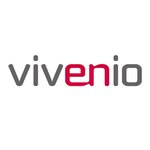Description

Airmeet

LineUpr
Comprehensive Overview: Airmeet vs LineUpr
Airmeet and LineUpr are both platforms designed to support virtual events, but they cater to slightly different needs and markets. Below is a comprehensive overview of each, along with a comparison in terms of market share, user base, and key differentiating factors.
Airmeet
a) Primary Functions and Target Markets
- Primary Functions: Airmeet is a comprehensive platform primarily used for hosting virtual events, webinars, conferences, and meetups. Its features include customizable event spaces, interactive sessions, networking capabilities, and real-time analytics.
- Target Markets: Airmeet is aimed at organizations of all sizes, from startups to large enterprises, educational institutions, and event organizers who need a robust solution for hosting large-scale virtual events.
b) Market Share and User Base
- Market Share: Airmeet has gained significant traction in the virtual event space, especially post-pandemic, but exact market share figures are not widely published. It competes with other major players like Zoom and Hopin.
- User Base: Airmeet has users globally, including major corporations and educational institutions. The platform is known to have a growing user base due to its scalable and customizable solutions.
c) Key Differentiating Factors
- Networking Features: Airmeet boasts unique networking functionalities, such as virtual lounges and speed networking, which facilitate direct interaction among attendees and make it stand out for event networking.
- Customization and Scalability: It offers deep customization options to tailor the virtual experience, making it suitable for complex and large events.
- Focus on Experience: Airmeet places a strong emphasis on creating immersive virtual events with excellent user experiences and engagement tools.
LineUpr
a) Primary Functions and Target Markets
- Primary Functions: LineUpr focuses on providing a simple and quick way to create event apps for small to medium-sized events. It includes features such as agenda creation, speaker bios, and attendee interaction tools like polls and Q&A.
- Target Markets: LineUpr targets event organizers looking for an easy and cost-effective solution to enhance attendee engagement through mobile event apps.
b) Market Share and User Base
- Market Share: LineUpr serves a niche within the event app space and is well-suited for smaller-scale events compared to platforms like Airmeet. Its exact market share is less prominent but serves a distinct segment of budget-conscious, smaller event organizers.
- User Base: The user base for LineUpr consists mostly of small businesses, community organizers, and events with more localized attendance, rather than global enterprises.
c) Key Differentiating Factors
- Simplicity and Speed: LineUpr is known for its ease of use and quick setup process, allowing organizers to create event apps within minutes without needing technical expertise.
- Cost-Effectiveness: The platform is designed to be affordable, making it accessible for smaller events with limited budgets.
- Focus on Mobile Engagement: It is particularly strong in offering mobile-centric solutions that can engage attendees effectively.
Comparison
- Feature Depth: Airmeet provides a more feature-rich environment suitable for large, complex events with strong networking needs, while LineUpr offers basic, streamlined functionalities aimed at boosting engagement for smaller events.
- Target Audience: Airmeet appeals to a broader range of entities needing advanced solutions, whereas LineUpr is ideal for small event organizers wanting quick and easy setup.
- Cost and Ease of Use: LineUpr is more cost-effective and user-friendly for smaller-scale applications, whereas Airmeet, although more complex, justifies its cost with extensive features for large events.
Overall, while both platforms serve the virtual event market, they are designed to meet the needs of different segments, with Airmeet focusing on comprehensive event management and networking for larger audiences, and LineUpr catering to smaller events looking for quick deployment and mobile engagement.
Contact Info

Year founded :
2019
+1 541-745-8254
Not Available
United States
http://www.linkedin.com/company/airmeetcom

Year founded :
Not Available
Not Available
Not Available
Germany
Not Available
Feature Similarity Breakdown: Airmeet, LineUpr
When comparing Airmeet and LineUpr, both platforms are designed to facilitate virtual events, but there are differences in their core features, user interfaces, and unique offerings. Here's a breakdown:
a) Core Features in Common:
-
Event Registration and Ticketing: Both platforms offer capabilities for event registration, enabling organizers to manage attendees' access to events efficiently.
-
Customizable Event Pages: Airmeet and LineUpr provide options to create and customize event pages, ensuring that hosts can tailor the experience to their brand and event theme.
-
Networking Features: Both platforms support networking among attendees, allowing them to connect and communicate through integrated chat and discussion forums.
-
Live Streaming and Pre-recorded Content: Both offer options for live streaming sessions as well as hosting pre-recorded content, catering to a wide range of event formats.
-
Analytics and Reporting: They provide analytics options, helping organizers track engagement and gather insights into attendee behavior and event performance.
b) User Interface Comparison:
-
Airmeet: Known for its immersive and engaging virtual environments, Airmeet focuses on facilitating interactive experiences. It features a visually appealing interface with interactive elements such as virtual tables for networking and a social lounge area that mimics physical event spaces.
-
LineUpr: Has a more straightforward and simplistic interface that emphasizes ease of use. It's designed to quickly create event agendas and offer a streamlined user experience primarily focused on informative content delivery rather than immersive features.
c) Unique Features:
-
Airmeet:
- Social Lounge and Virtual Tables: Airmeet stands out with its social lounge, where attendees can interact at virtual tables, encouraging networking and small-group discussions similar to an in-person event.
- Interactive Features: Features like polls, Q&A sessions, and chatrooms are integrated seamlessly to enhance attendee engagement.
- Multiple Stage Options: Provides multiple stages for parallel event tracks, allowing organizers to host complex events with simultaneous sessions.
-
LineUpr:
- Easy Setup for Small Events: LineUpr is particularly suited to smaller events or single-track agendas, offering a quick and easy setup process.
- Event App Integration: Strong emphasis on mobile accessibility through event apps, thereby facilitating a user-friendly mobile experience for attendees.
Each platform has its strengths depending on the type and scale of the virtual event an organizer aims to host. Airmeet is more suitable for larger, interactive, and networking-intensive events, while LineUpr offers simplicity and ease of use for straightforward event agendas.
Features

Virtual Events
Customization Options
Analytics and Reporting
Event Management
Attendee Engagement
Analytics and Reports
Engagement Tools

Interactive Attendee Engagement
User-Friendly Event Creation
Comprehensive Event Management
Effortless Communication
Best Fit Use Cases: Airmeet, LineUpr
Airmeet and LineUpr are both platforms designed for event management, but they cater to different needs and scenarios. Here's a detailed look at their best-fit use cases:
Airmeet
a) For what types of businesses or projects is Airmeet the best choice?
-
Large Conferences and Summits: Airmeet is ideal for hosting large-scale virtual conferences, summits, and meetings. Its features support complex event management like multi-track agendas, breakout sessions, and virtual exhibition booths.
-
Corporate Events and Webinars: Mid-size to large enterprises often choose Airmeet for town halls, corporate webinars, training sessions, and networking events due to its robust engagement tools and security features.
-
Educational Institutions: Universities and educational organizations can use Airmeet to conduct virtual classes, workshops, and student fairs. Its social lounge and interactive features help mimic the physical campus experience.
-
Community Gatherings: Airmeet is well-suited for organizations that host community events or industry forums, providing spaces for networking and discussions.
LineUpr
b) In what scenarios would LineUpr be the preferred option?
-
Small Events and Simple Conferences: LineUpr is more suited for smaller events or straightforward conferences where the requirements are more about providing information rather than interactive engagement.
-
Personal and Non-Profit Events: Because of its simplicity and cost-effectiveness, personal gatherings, community-driven events, and non-profit organizations can leverage LineUpr for event planning and management.
-
Internal Company Meetings: Small businesses can efficiently use LineUpr for internal meetings, training sessions, and small-scale workshops due to its focus on providing a streamlined information delivery and schedule management.
-
Event Apps: Organizations that need a quick, easy-to-set-up event app for communicating schedules, speaker info, and location maps can use LineUpr to create and distribute an event guide without needing extensive technical knowledge.
d) How do these products cater to different industry verticals or company sizes?
-
Industry Verticals:
- Airmeet: It caters well to industries like technology, education, healthcare, and finance, where user engagement through virtual networking sessions and detailed event analytics are critical.
- LineUpr: This platform is versatile and can be used across various sectors where the focus is on straightforward information sharing, such as community events, education, and basic corporate meetings.
-
Company Sizes:
- Airmeet: Best suited for medium to large enterprises or any organization planning large-scale or complex virtual events. Its pricing and feature set align with businesses that require comprehensive tech support and scalability.
- LineUpr: Tailors more towards small to medium-sized businesses or even individual event planners. The platform’s simplicity and cost-effectiveness make it an attractive option for those with smaller budgets and simpler event needs.
In essence, the choice between Airmeet and LineUpr depends largely on the scale and complexity of the event, the need for interaction and engagement, and the budget and technical capacity of the hosting organization.
Pricing

Pricing Not Available

Pricing Not Available
Metrics History
Metrics History
Comparing teamSize across companies
Conclusion & Final Verdict: Airmeet vs LineUpr
To provide a comprehensive conclusion and final verdict for Airmeet and LineUpr, I will analyze their offerings based on various factors, such as features, usability, pricing, customer support, and overall value.
a) Best Overall Value:
Airmeet generally offers the best overall value for users seeking a robust, interactive virtual event solution. With its strong emphasis on networking, engagement, and interactive features, it provides a comprehensive platform for hosting large-scale events, including conferences, virtual fairs, and community meetups. It is particularly well-suited for organizations prioritizing attendee engagement and networking opportunities.
b) Pros and Cons:
Airmeet:
Pros:
- Networking Features: Airmeet excels in providing extensive networking capabilities, such as virtual tables and lounges, enabling participants to connect and interact meaningfully.
- Engagement Tools: Offers various interactive tools, such as polls, Q&A sessions, and chat functions, enhancing attendee participation.
- Customization: Provides robust customization options for branding and event management, allowing hosts to tailor the experience to their audience.
- Scalability: Suitable for events of all sizes, from small meetups to large conferences, providing flexibility as your event needs grow.
Cons:
- Complexity: The rich feature set can be overwhelming for smaller events or users who require simplicity.
- Cost: Generally, higher pricing can be a barrier for smaller organizations or events with limited budgets.
LineUpr:
Pros:
- Simplicity and Speed: Offers an easy-to-use interface with quick setup, ideal for users who need to create event apps efficiently without complex features.
- Affordability: Presents a cost-effective solution for small to medium-sized events, particularly beneficial for organizers with tight budgets.
- Mobile-Friendliness: Focuses on providing a seamless experience on mobile devices, which is great for attendees primarily accessing the event on-the-go.
Cons:
- Limited Features: Compared to Airmeet, LineUpr may lack some advanced features that larger or more interactive events might need.
- Networking Capabilities: It offers fewer options for networking and attendee interaction compared to Airmeet.
c) Specific Recommendations:
-
Identify Your Event Needs: Users should identify the scale and nature of their event. For large-scale events with a strong focus on networking and engagement, Airmeet is the recommended choice. However, for smaller events or when cost-efficiency and simplicity are priorities, LineUpr could be more suitable.
-
Budget Considerations: Consider your budget constraints. If your budget allows, investing in Airmeet could enhance the event experience through its comprehensive features. However, if being cost-effective is crucial, LineUpr provides essential functionality at a lower price.
-
Technical Complexity: Evaluate the technical skills of your team and your audience's needs. Opt for Airmeet if you have the capacity to manage a feature-rich platform, whereas LineUpr might be preferable for teams needing a straightforward, no-fuss solution.
In conclusion, the decision between Airmeet and LineUpr depends significantly on the specific needs and resources of the user. By aligning the choice with event goals, budget, and desired attendee interaction level, organizers can select the platform that best delivers their event's objectives.
Add to compare
Add similar companies




